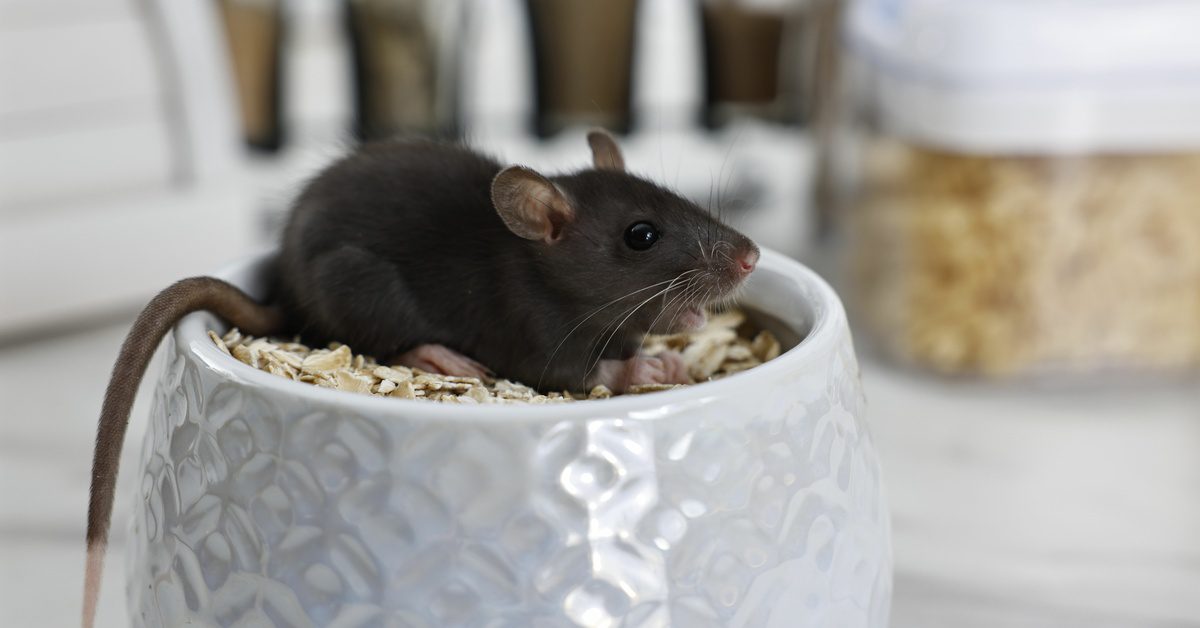
Understanding the Diets of Common Household Rodents
When rodents invade a home, they often search for something that humans enjoy: food. If you’ve spotted these unwanted guests in or around your residence, you can more successfully discourage their presence by learning about their dietary habits. This guide will help you understand the diets of common household rodents, including rats, mice, and squirrels, with a detailed breakdown of their preferences.
Rats and Mice
These rodents are omnivorous feeders, consuming a mix of plant-based and animal-based foods. Their dietary preferences often revolve around what’s most easily accessible, including the items listed below.
Food Scraps
When rats and mice are in homes, they scavenge for leftover food, especially scraps left uncovered or in unsecured trash bins. These rodents are not picky eaters when it comes to leftovers and will eagerly consume discarded bread, cooked meals, and sugary snacks.
Mice and rats have sharp teeth to gnaw through plastic bags and thin packaging, allowing them to access food waste. Accessible scraps are always an attractant, underscoring the importance of maintaining clean kitchen spaces and tightly sealed bins.
Fruit and Vegetables

Rats and mice also have an affinity for produce. Whether fresh or slightly decayed, fruits like apples, bananas, and berries attract rodents due to their natural sugars. Vegetables such as carrots, potatoes, and leafy greens also feature in their diet. These rodents often target gardens and countertops in search of produce. Fruits and vegetables offer hydration and nutrients, making produce a double source of sustenance for rodents.
Meat
These rodents also find meat products appealing, especially on plates left unattended, in trash receptacles, or in pet food bowls. Mice and rats have also been known to scavenge bones or scraps of poultry, fish, and other protein sources, which they use for physical energy and sustenance.
Grains, Oats, and Cereal

Grains are a dietary foundation for many rodents. Oatmeal, rice, pasta, and breakfast cereals attract rats and mice due to their abundance of carbohydrates. Pantries or cupboards with open bags of grains are hotbeds for rodent feeding activity. Small grains require minimal effort to eat, making them ideal for rodents seeking convenient, calorie-dense meals.
Pet Food
Pet food is a source of balanced nutrition for animals, which inadvertently appeals to rodents as well. Dry kibble, wet meals, and loose seed blends, whether for dogs, cats, or birds, are a prime source of nourishment for rats and mice. If you leave food bowls out overnight, they may attract rodents. The protein, fats, and grains in pet food mirror the nutritional variety that rodents crave.
Squirrels
Squirrels are another common household rodent that can find their way into your home, especially in your attic or garage. However, like their rat and mouse counterparts, these opportunistic dietary explorers are open to eating multiple foods, despite their preferences toward plants. Learn more about what they eat below so you can better protect your home from these hungry invaders.
Nuts and Seeds
People famously associate squirrels with nuts, and there’s a good reason for this reputation. Walnuts, acorns, almonds, and hazelnuts are staples of a squirrel’s diet. However, seeds from sunflowers, pumpkins, and other plants also rank high among their favorite foods.
These items provide essential nutrients for energy and long-term survival, often inspiring squirrels to cache or store seeds and nuts in hidden locations around their environment. You must keep nuts or seeds within your home securely stored away, or you may find a squirrel seeking them out.
Fungi
You may be surprised to learn that mushrooms and various fungi are part of a squirrel’s diet. Whether growing on trees, stumps, or forest floors, fungi offer nutritional benefits and are an occasional alternative to other foraged foods. Squirrels are known to carry or chew mushrooms, which can result in the dispersion of spores that enable fungi to grow elsewhere.
Grains
Like rats and mice, squirrels benefit from grains in their diet. Loose or improperly stored cereals, corn, and oats are attractive feeding sources. Squirrels may access these options in outdoor or indoor settings, such as fields or bird feeders, and within homes if given the opportunity.
Fruits and Vegetables
For squirrels, certain fruits and vegetables provide needed hydration and nutrition. Apples, berries, tomatoes, and leafy greens contribute to their diet. Your home’s garden with fruits and vegetables can entice squirrels, especially during seasons when natural sources in their habitat grow scarce.
Insects
Although grains, nuts, and vegetation dominate a squirrel’s diet, insects occasionally supplement it. Larvae, caterpillars, and other small insects are a source of protein and variety. Squirrels exhibit insect-feeding, particularly during spring and summer, when small critters remain plentiful in their natural surroundings.
Foods With Sugar
Foods containing sugar are equally irresistible to squirrels. Whether from naturally occurring sugar sources such as fruit or sweet residue on discarded wrappers and packaging, squirrels eagerly consume sugar. These sweet foods deliver energy boosts that support a squirrel’s active lifestyles. Sweet-smelling food placed near homes or gardens risks drawing squirrels closer.
Plants
Shoots, buds, and bark from trees and plants occupy a place in the dietary rotation of squirrels. They gnaw on these items to derive nutrients while also naturally filing their rapidly growing teeth. Plants and trees near homes are landscapes ripe for foraging, and bite marks on bark often reveal signs of squirrel presence.
Legacy Rodent Control Can Keep These Rodents Away
Now that you have a better understanding of the diets of household rodents like rats, mice, and squirrels, you can more effectively manage your home and know which foods you should store away more securely. A targeted approach to limiting access to food sources discourages rodent activity and fosters a pest-free home.
However, rodents can be incredibly persistent. If you find that you need help getting rid of their unwanted presence, contact Legacy Rodent Control today. When you call for our rodent control services in Frisco, our skilled team members can provide you with a humane yet effective way of removing squirrels, mice, and rats from your home without causing you extra inconvenience.
